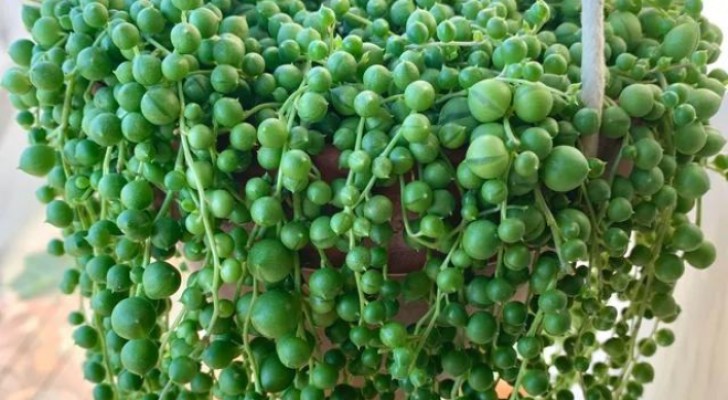Proper cultivation and care of the Rosary Plant will ensure that it thrives in your home

Senecio rowleyanus, is also known as the Rosary Plant or String of Pearls due to the very particular shape of its branches and leaves. This plant is one of the Asteraceae family, native to South Africa. Despite its very particular appearance, rounded pea-like leaves and the drooping stems, this plant is an easily-cultivated evergreen succulent whose white flowers smell like cinnamon.
A striking peculiarity of this plant are the semi-transparent translucent "windows" on its leaves which allow the sun's rays to reach its insides, providing the energy needed for photosynthesis.
This is a plant with very delicate stems, which need to be handled with care. So, what needs to be taken care of to ensure this plant thrives? Read on to find out more:
Caring for the Rosary Plant

Senecio rowleyanus, like all succulents, requires very little care, but it still has some basic needs:
- Light: this plant needs a lot of light to thrive, and it can tolerate direct sunlight; it should be placed next to a window or in a very brightly-lit spot;
- If you decide to place the plant outdoors, make sure you keep it away from cold drafts and that it is not exposed to temperatures below 10 degrees C;
- Watering: like all succulents, this plant requires very little water. You can water it about 3 times a week in winter, 2 times a week in summer, and whenever the soil is dry;
- Being a "drooping" plant, you can place it on high surfaces - perhaps on a shelf, the top of a bookcase, hung from a light fitting, a window or the ceiling.
Possible problems which can arise with the Rosary Plant

There are only a few things you need to pay attention to, since this plant is not usually targeted by parasites:
- Over-watering can lead cause root rot, which is why irrigation must be carefully monitored;
- Using hard water (mineral rich water) for irrigation can cause white spots to develop on the leaves which, in turn, will inhibit photosynthesis;
- Using a pot that is too large for the plant can also cause root rot when humidity/moisture builds up in the bottom of the pot (and which you may not easily detect);
- Fertilizing: do not fertilize during winter, as this is when the plant will be at vegetative rest;
- Finally, pay attention to the temperature: this plant does not like the cold and could suffer if exposed to temperatures below 7 degrees centigrade.
Are you ready to cultivate a Rosary Plant in your home?